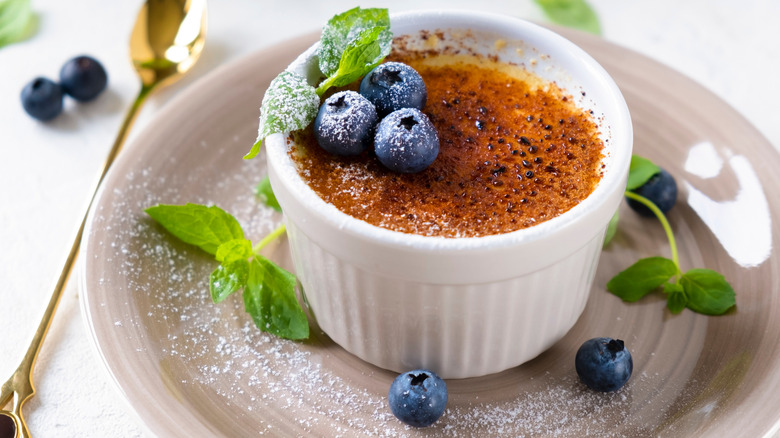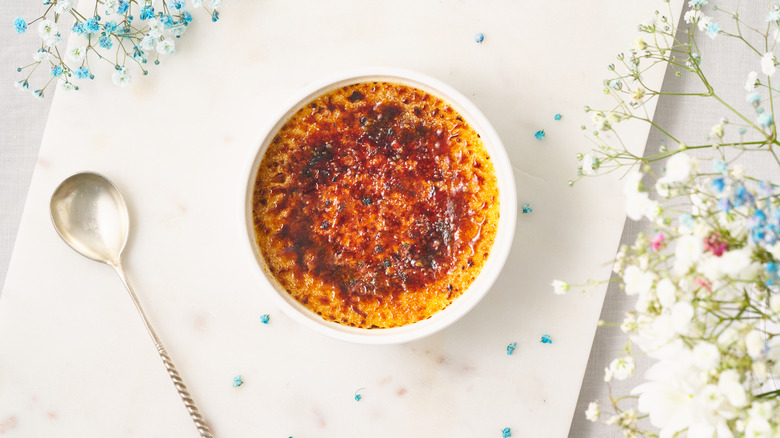Why Trinity College Is Sometimes Associated With Crème Brûlée
For something that seems so interchangeable with French fine dining, crème brûlée is a relatively new inductee to the hallowed halls of French cuisine. Gabriella Gershenson recalls in Saveur how the French pastry chef Pierre Herme experienced the dish for the first time in 1980s New York City. Similarly, the online magazine TCS notes that even though written recipes for crème brûlée first appeared in French in the 1691 cookbook "Cuisinier royal et bourgeois" by François Massialot, it only achieved its cultural cache in the 1980s.
To make matters more complicated, the Spanish region of Catalonia also has its own story about how it invented what is essentially crème brûlée. According to Honest Cooking, the legend is that a flan some Catalonian nuns were preparing for a visiting bishop came out too liquidy. To salvage something, they poured scorching sugar into it, causing the bishop to exclaim that the cream was torched. Matters grow still more complicated when the English attempt to claim the origin of a kind of crème brûlée for themselves.
Trinity College has named Trinity Cream
Trinity College of the University of Cambridge has certainly given its burnt cream a better seat for longer than the French have for crème brûlée. According to TCS, Trinity Cream was included as part of the college's menu in 1879 and its defining sugar came with the college's crest stamped on it. Saveur notes that examples of crème brûlée-like dishes can be traced back to fifteenth century England when the annual abundance of milk due to calving cows allowed people to indulge in a pudding topped with burnt sugar.
That said, Trinity College acknowledges on its website that "The story that crème brûlée itself was invented at the College almost certainly has no basis in fact." Still, they do claim the dish as part of their identity. That is probably just as well as trying to argue who had the idea of frying sugar over a pudding is time wasted when one could simply enjoy crème brûlée.

